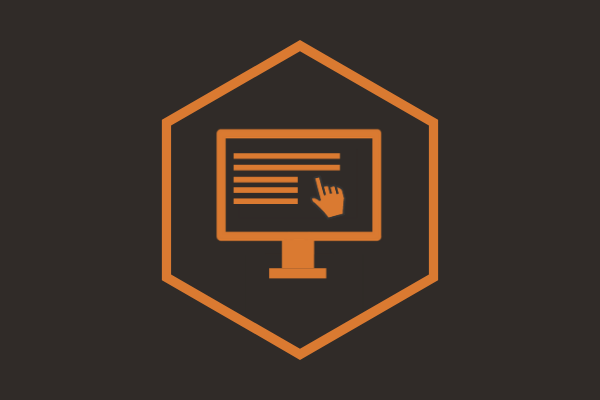The internet should be available to all people, regardless of the technology they are using, their language, location, or ability and web accessibility is when this goal is met.
Web accessibility is when websites, apps, and digital tech are built so that people with disabilities or access issues can use them. When organisations design these things in the incorrect way, it can create barriers that exclude people. This can stop them from accessing the digital service altogether.

Web accessibility covers all disabilities that
affect digital access
Auditory
Deaf users can’t always fully engage with your content. The following things can help a Deaf user understand the content:
- Plain English.
- Clear navigation.
- Multiple contact options.
- Video.
With this being said, changes are happening all the time to assist deaf and hard-of-hearing users. The Signly app is a great resource for those who use British Sign Language as their first language. A pre-recorded sign language video is displayed on a user’s mobile when they look at written content.
Cognitive
Your content might not be so simple for a user with learning difficulties. Making sure that your site is simple and easy to navigate makes a huge difference. It’s also important to ensure it works well with screen readers so that the user can have the site read out to them.
Neurological
Users with low mobility may find typing and using a mouse a challenge. Users can use voice commands to replicate mouse actions. This only works when a website or digital service is built to ensure it works with the software accurately.
Physical
Physical disabilities and chronic conditions can mean users struggle to use keyboards and a mouse. Set up pages and features so that they can be accessed by someone who can’t use a keyboard or mouse. This will allow those users to access the site without additional difficulty.
Visual
A user who is partially sighted may need to use software that allows them to control the size of text and images on a page, replicating a magnifying glass effect on text and images. On the other hand, they can use a tool that zooms the entire page as a whole rather than specific parts or elements of a page.
Built with accessibility in mind, a digital service should remove barriers that many people face in the world.
Additional Benefits to Digital Accessibility
Web accessibility also benefits people without disabilities, for example:
- People using devices with small screens. Such as smartphones and watches, or those with different input modes, such as smart TVs.
- Older people with changing abilities due to ageing.
- People who are experiencing temporary disabilities, such as a broken wrist.
- People in situations that limit their access, for example, in a quiet area where they are unable to listen to audio.
- People with a poor internet connection.
The World Wide Web Consortium (W3C), which has developed the Web Content Accessibility Guidelines (WCAG), has created a video about accessibility perspectives. It gives context to the many situations where someone may struggle to access digital services. The film makes it clear why accessibility measures are not just for people with disabilities or special needs but for everyone.
Mobile Accessibility
Mobile accessibility refers to making websites and other digital services more accessible to people with disabilities. Specifically, those who access digital services via smartphones and other devices such as tablets, digital watches, smart TVs and internet-enabled appliances. Things to be aware of on mobile include:
- Small screen sizing.
- Touchscreens.
- Different input methods.
- The fact that these devices are often used in different environments, such as outdoors in bright sunlight.
WCAG 2.2
More recently, W3C released the WCAG 2.2 Guidelines in order to keep up with technological advancements since WCAG 2.1 in 2018. You can view a full list of the changes to WCAG 2.2 here.
